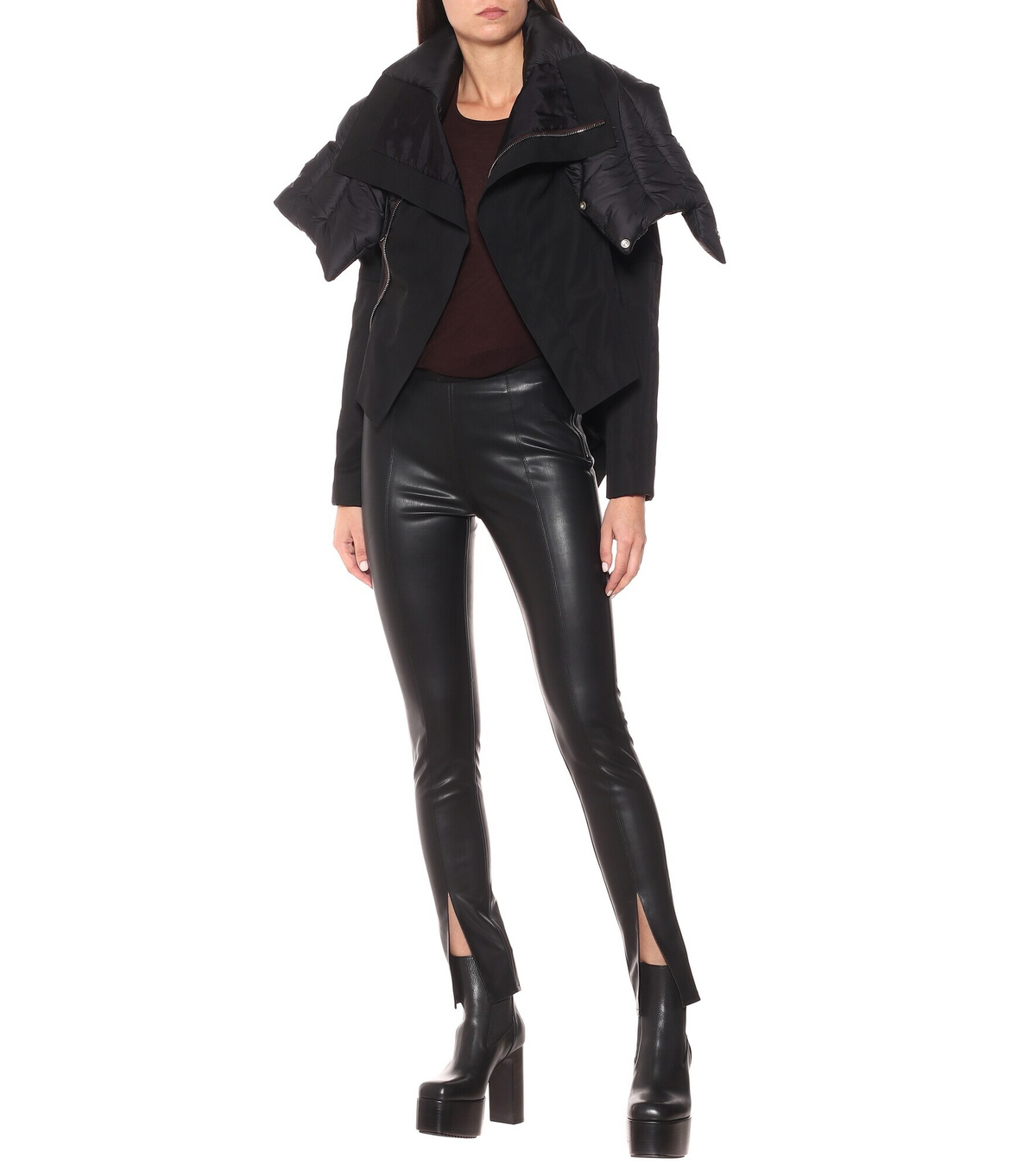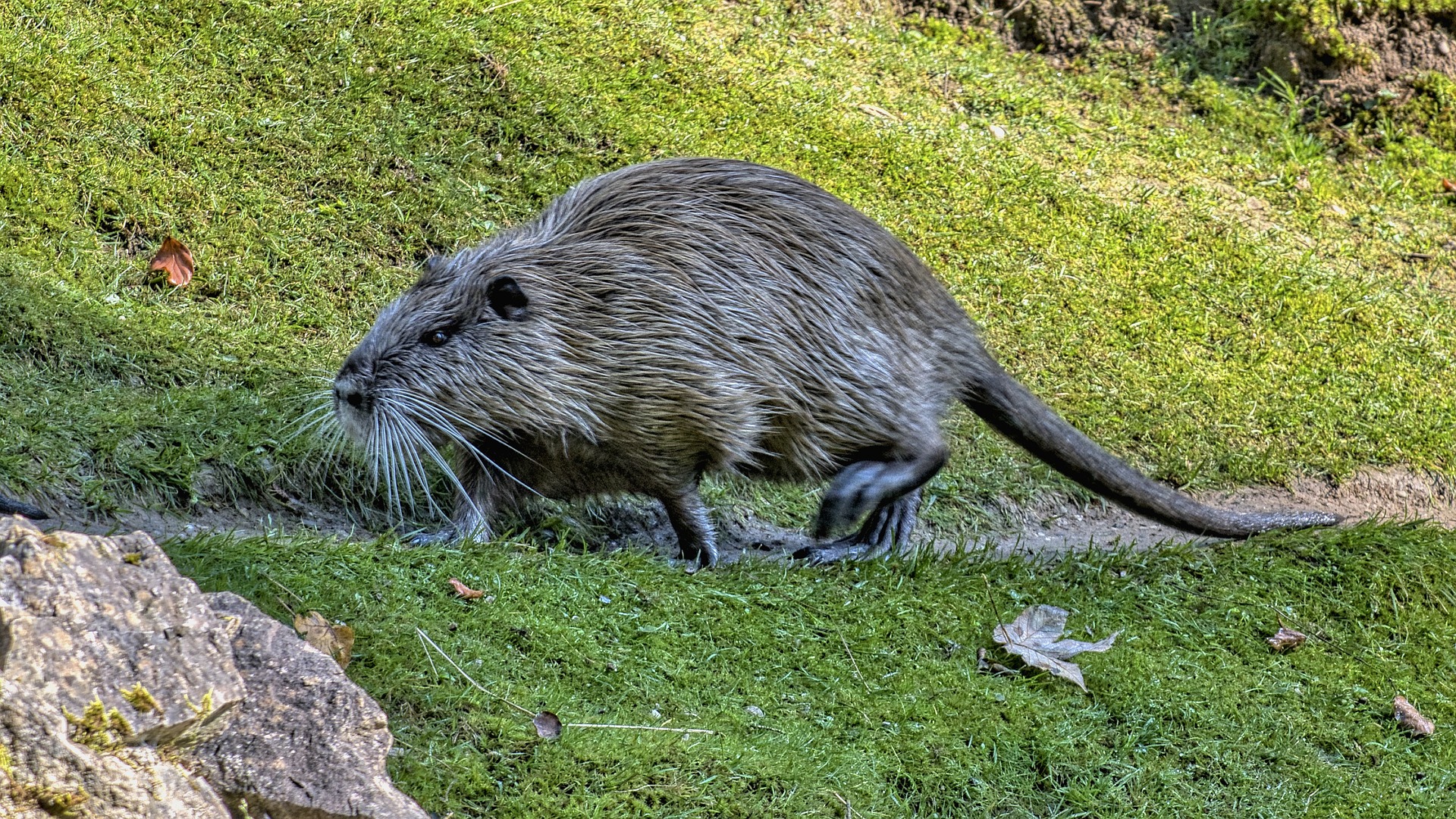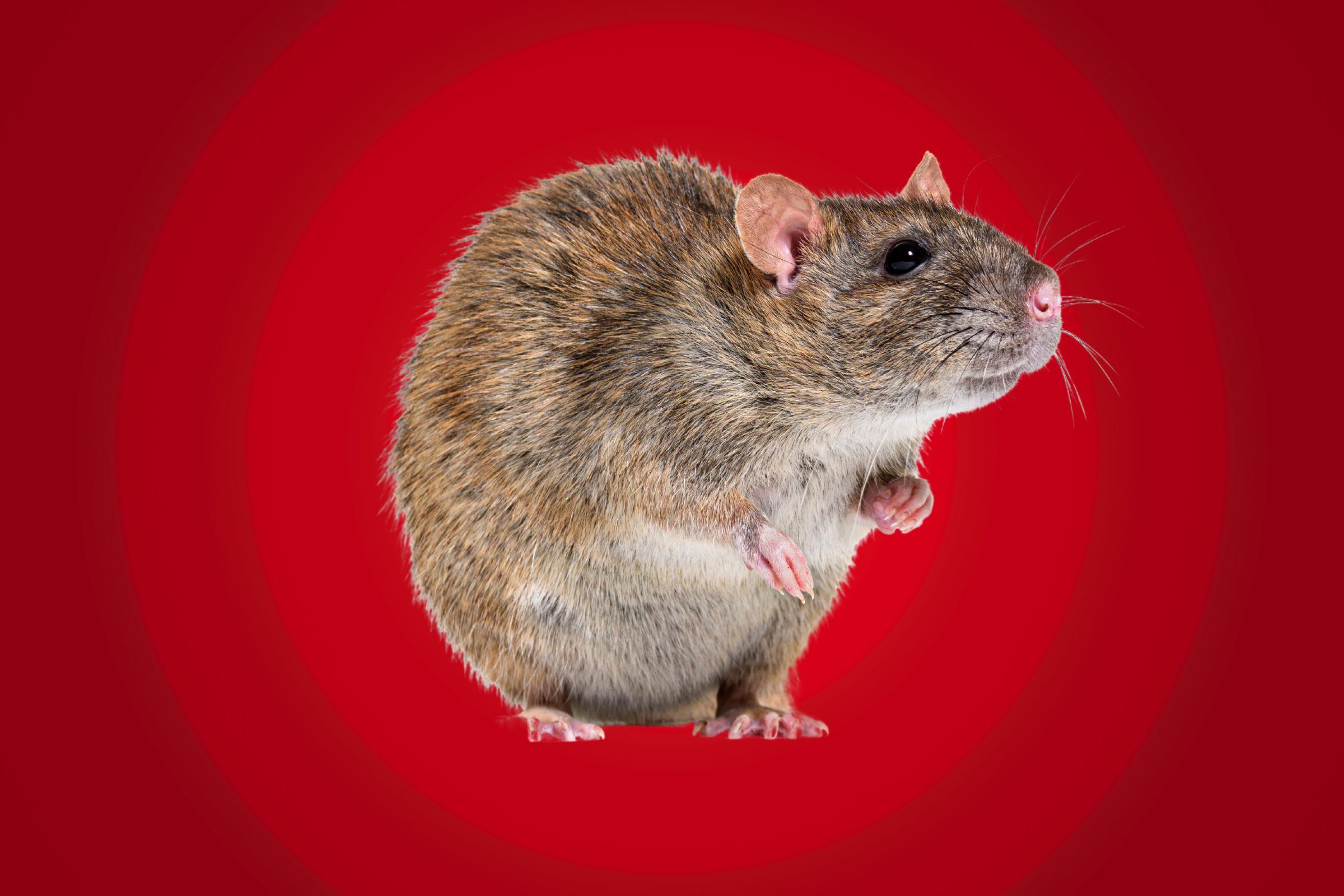Unveiling The Enigma Of The Giant Rat Jean Jaclet And Rick Owens - A Shared Vision
There's a subtle thread, a whisper in the artistic currents, that seems to connect two seemingly disparate creative minds: Jean Jaclet, a master of unsettling illustrations, and Rick Owens, the fashion world's dark poet. It's a connection that hints at a shared fascination, perhaps even a quiet collaboration, centered around a curious concept – the giant rat. This isn't about a literal creature, you see, but a symbolic presence, a powerful motif that, when brought to light, offers a fresh way to look at their individual expressions.
These two figures, one celebrated for his intricate, often haunting drawings, the other for his distinctive, almost architectural clothing designs, typically operate in their own separate creative spaces. Yet, for some observers, there's a resonance, a particular mood or underlying theme, that feels very much alike. It's almost as if they are both exploring similar depths of human experience, just through different means, and this shared "giant rat" idea might just be a key to that common ground.
This particular discussion aims to pull back the curtain on this intriguing possibility, to explore what this "giant rat" might represent, and how it could subtly tie together the unique artistic outputs of Jaclet and Owens. We will, in a way, consider the hints and suggestions left within their works, piecing together a picture that shows a deeper, perhaps unspoken, connection between them. It's a chance to look at art and fashion with a slightly different lens, perhaps to find meaning where it wasn't immediately apparent.
- Gae Exton Now
- Charles Barkley Daughter Wedding Pictures
- Ben Stiller With Wife
- Adriana Lima 2000s
- Emilio Estevez Movies
Table of Contents
- Jean Jaclet - A Life in Shadows and Lines
- Rick Owens - The Architect of Dark Glamour
- What is the Giant Rat Enigma in Their Work?
- How Do Their Worlds Intersect Through This Motif?
- Is There a Hidden Narrative Behind the Giant Rat?
- What Does This Unveiling Mean for Art and Fashion?
Jean Jaclet - A Life in Shadows and Lines
Jean Jaclet, a French artist, has built a reputation for creating art that feels both deeply personal and universally unsettling. His drawings, often rendered in stark black and white, or with muted, earthy tones, possess a quality that captures the eye and holds it. He tends to depict figures that are elongated, sometimes grotesque, and always imbued with a sense of quiet drama. His work frequently touches upon themes of isolation, transformation, and the strange beauty found in things often considered ugly or overlooked. It's a particular kind of artistry, you know, one that really makes you think about what's beneath the surface.
His artistic approach is typically characterized by a meticulous attention to detail, even when the subject matter itself is abstract or surreal. Jaclet's pieces often feel like they are pulled from a dream, or perhaps a nightmare, yet they are always grounded by a masterful command of line and form. He has a way of making the mundane seem extraordinary, and the extraordinary feel strangely familiar. This focus on the hidden aspects of life, the things that lurk in the periphery, is arguably a key part of his artistic voice, and it's here that we might start to see hints of the giant rat enigma.
Jaclet's art, for many, serves as a mirror reflecting the less comfortable parts of human existence. He doesn't shy away from the raw or the unsettling; rather, he embraces it, transforming it into something compelling to observe. His influences seem to pull from a wide range of sources, from classical art to more modern, subversive movements, all filtered through his unique perspective. This blend of the old and the new, the beautiful and the bizarre, gives his work a timeless quality, a certain weight that really stays with you, so.
Personal Details - Jean Jaclet's Artistic Journey
| Detail | Information |
|---|---|
| Nationality | French |
| Known For | Illustrations, Drawings, Surreal Art |
| Artistic Style | Dark, detailed, often unsettling, symbolic |
| Themes Explored | Isolation, transformation, urban decay, the overlooked |
| Notable Traits | Mastery of line work, unique figure depiction |
| Influence | Subtle yet profound impact on contemporary art discussions |
Rick Owens - The Architect of Dark Glamour
Rick Owens, on the other hand, operates in the high-stakes world of fashion, but his approach is anything but conventional. He's known for creating clothing that defies easy categorization, often described as gothic, minimalist, or avant-garde. His designs feature oversized silhouettes, draped fabrics, and a palette dominated by black, grey, and muted tones. Owens' work is not just about clothes; it's about a feeling, a mood, a statement about identity and existence. His pieces often feel like armor, or perhaps a second skin, offering both protection and a particular kind of self-expression, basically.
Owens has carved out a unique space by consistently pushing boundaries and challenging traditional notions of beauty. His collections often incorporate elements that some might find jarring – deconstructed forms, raw edges, and unexpected materials – yet he always manages to make them feel cohesive and, in their own way, quite elegant. There's a deliberate rawness to his creations, a sense that they are meant to be lived in, to age, and to tell a story. This dedication to authenticity, even when it means going against the grain, is a defining characteristic of his brand, you know.
His philosophy extends beyond just the garments themselves, encompassing his runway shows, his personal style, and even his living spaces. Owens cultivates an entire aesthetic universe that is consistent and deeply personal. He often speaks about themes of decay, mortality, and the beauty of imperfection, which resonate with a certain audience seeking something more profound than fleeting trends. This constant exploration of the darker, more introspective aspects of life, it’s almost, is what makes his work so compelling and enduring.
Personal Details - Rick Owens' Creative Path
| Detail | Information |
|---|---|
| Nationality | American |
| Known For | Fashion Design, Avant-Garde Style |
| Design Style | Gothic, minimalist, deconstructed, oversized silhouettes |
| Key Colors | Black, grey, muted tones |
| Themes Explored | Mortality, decay, beauty in imperfection, identity |
| Brand Philosophy | Authenticity, challenging conventions, enduring style |
What is the Giant Rat Enigma in Their Work?
So, what exactly is this "giant rat enigma" that connects Jean Jaclet and Rick Owens? It's not a literal creature, as we've said, but rather a conceptual thread, a shared artistic motif that, once recognized, seems to resonate throughout their individual bodies of work. Think of it as a subtle symbol, perhaps representing the overlooked, the resilient, or even the subversive elements of urban existence. It’s a way of looking at the hidden life that thrives in the shadows, the parts of reality that are often ignored but possess a powerful, undeniable presence, kind of.
For Jaclet, the "giant rat" might manifest as the unsettling, yet strangely compelling, figures that populate his drawings – creatures that are not quite human, not quite animal, but embody a raw, primal energy. His art often shows a fascination with the underbelly of things, the grit and the struggle that gives life its true texture. The rat, in this context, becomes a symbol of survival, adaptation, and a certain kind of dark wisdom, a creature that thrives in conditions others might shun. This focus on the unglamorous aspects of life, you know, really comes through.
In Owens' world, the "giant rat" could be seen in the raw edges of his garments, the deconstructed forms, or the way his clothing often feels both protective and vulnerable. It speaks to a certain anti-glamour, a rejection of polished perfection in favor of something more authentic and enduring, like the resilience of a creature that can exist anywhere. His aesthetic often draws from themes of urban decay and the beauty found in things that are broken or worn, and the "rat" could be a quiet nod to this, a symbol of persistence in a world that tends to discard. It’s a very particular kind of beauty he goes for, after all.
Decoding the Symbolism of the Giant Rat Unveiling
The act of "unveiling" this giant rat motif involves looking beyond the obvious, seeking out the subtle cues and shared sensibilities that might not be immediately apparent. It's about recognizing that both artists, in their own unique ways, are drawn to themes that are often considered uncomfortable or unconventional. The rat, as a symbol, carries many connotations – resilience, adaptability, survival, but also decay and the hidden aspects of society. When applied to their work, it helps us see how they both explore these less palatable truths, turning them into something thought-provoking. It's almost like a secret language they share, you see.
This symbol, the "giant rat," isn't necessarily a direct image appearing in their work, but rather an underlying concept that informs their creative choices. It suggests a shared appreciation for the raw, the primal, and the often-overlooked aspects of existence. For Jaclet, it might be in the unsettling gaze of his figures; for Owens, in the deliberate imperfection of a seam or the heavy drape of a fabric. The "unveiling" is our process of connecting these dots, finding the common thread that runs through their seemingly different creative expressions, and understanding what it might signify. It really makes you think about their deeper artistic intentions, so.
How Do Their Worlds Intersect Through This Motif?
The intersection of Jaclet's and Owens' worlds through the "giant rat" motif lies in their shared approach to aesthetic and thematic concerns. Both artists have a profound interest in exploring the darker, more introspective facets of life, often finding beauty in places others might shy away from. Jaclet's detailed, sometimes disturbing illustrations and Owens' stark, architectural fashion pieces both speak to a certain rawness, a deliberate rejection of superficiality. They both seem to suggest that true character, or true beauty, is found in what endures, what survives, what persists against the odds, like a rat in an urban setting, actually.
Consider the shared mood in their creations: a sense of quiet power, a touch of melancholy, and an appreciation for the worn and the weathered. Jaclet's figures often appear to have seen much, bearing the marks of experience, while Owens' clothing often looks as though it has been lived in, acquiring character over time. This shared appreciation for the marks of existence, the stories etched onto surfaces, whether paper or fabric, forms a strong bond between their artistic outputs. It's a very specific kind of sensibility, I mean, that truly sets them apart.
Furthermore, both artists seem to challenge conventional notions of what is beautiful or desirable. Jaclet's work often makes us confront uncomfortable truths, while Owens' designs are not always about immediate appeal but rather about a deeper, more enduring resonance. The "giant rat" as a shared symbol could represent this collective defiance of traditional aesthetics, a celebration of the unconventional, and a recognition of the strength found in things that thrive outside the spotlight. It's a rather profound connection, when you think about it.
Shared Sensibilities - The Giant Rat's Presence
The presence of the "giant rat" in their shared sensibilities is not about a literal collaboration, but more about an alignment of artistic spirit. Both Jaclet and Owens seem to possess an artistic vision that values resilience, adaptability, and a certain kind of stark, unvarnished truth. The "rat," in this context, embodies these qualities – a creature that survives, adapts, and thrives in environments that are often harsh or overlooked. This shared appreciation for tenacity and for finding meaning in the margins is what truly connects them, basically.
Their works, in their own ways, invite us to look closer, to find the beauty in the unconventional, and to appreciate the enduring power of things that might initially seem insignificant. The "giant rat" becomes a shorthand for this shared artistic philosophy, a symbol of their mutual fascination with the raw, unfiltered aspects of life. It’s a quiet nod to the idea that strength and character can be found in unexpected places, and that there's a particular kind of grace in simply existing, despite the odds. This perspective, you know, really shines through in their creations.
Is There a Hidden Narrative Behind the Giant Rat?
Could there be a hidden narrative, a deeper story, behind this recurring "giant rat" motif that links Jean Jaclet and Rick Owens? Perhaps it's a commentary on urban survival, a quiet acknowledgment of the unseen forces that shape our cities and our lives. Or it might be a more personal reflection on their own artistic journeys, a symbol of their resilience in navigating the often-unforgiving worlds of art and fashion. It’s a question that invites speculation, encouraging us to look beyond the surface of their work and consider the unspoken messages they might be trying to convey, really.
One possible narrative is that the "giant rat" represents a shared fascination with the undercurrents of society – the things that persist, adapt, and even flourish in the shadows, away from the mainstream gaze. Both Jaclet and Owens, in their own ways, have always embraced the unconventional, the raw, and the often-misunderstood. The rat, as a creature of the hidden spaces, could symbolize this shared artistic inclination to explore what lies beneath, to bring light to the overlooked aspects of existence. It’s a pretty compelling idea, when you consider it.
Another interpretation could be that the "giant rat" serves as a metaphor for the creative process itself – a relentless, often messy, but ultimately powerful force that pushes through obstacles to bring something new into being. Artists, like rats, must often be resourceful, adaptable, and persistent. This narrative suggests that the motif is a tribute to the enduring spirit of creation, a recognition of the grit and determination required to forge a unique path in the world. It’s a powerful thought, you know, about what it takes to make something truly original.
Exploring the Depths of the Giant Rat Enigma
Exploring the depths of the "giant rat enigma" means considering how this seemingly simple motif can carry such complex layers of meaning. It’s not just about an animal; it’s about what that animal represents in a broader cultural and psychological context. For Jaclet, it might be the primal, subconscious fears or desires that surface in his art. For Owens, it could be the raw, untamed energy that he seeks to capture and express through his designs. The "enigma" is that it’s never fully explained, leaving room for personal interpretation and ongoing discovery, so.
This subtle, shared symbol acts as a kind of artistic signature, a quiet nod between two creators who, despite their different mediums, speak a similar language of authenticity and resilience. The "giant rat" becomes a lens through which we can better appreciate their individual artistic statements, seeing how they both challenge norms and celebrate the enduring spirit of life, even in its less glamorous forms. It’s a very intriguing way to look at their combined output, honestly, and it adds a certain richness to their stories.
What Does This Unveiling Mean for Art and Fashion?
What does this "unveiling" of the "giant rat" motif mean for the broader worlds of art and fashion? It suggests that true artistic influence and connection can be far more subtle and conceptual than direct collaborations or overt references. It encourages us to look for deeper thematic links, for shared philosophies that transcend specific forms or mediums. This approach allows for a richer, more nuanced appreciation of creative work, moving beyond surface-level aesthetics to understand the underlying ideas that drive artists and designers. It's a way of seeing the invisible threads that tie creative spirits together, you know.
For art, it highlights the power of symbolism and the way artists can communicate complex ideas through seemingly simple motifs. It shows that an artist's personal vision can resonate with others, even across different disciplines, creating a kind of unspoken dialogue. The "giant rat" becomes a case study in how a conceptual idea can bridge gaps between various artistic expressions, proving that inspiration can come from unexpected places and manifest in diverse forms. It really makes you think about how art communicates, after all.
In fashion, this "unveiling" demonstrates that design can be about more than just trends or utility; it can be a vehicle for profound statements about existence, resilience, and the human condition. Owens' work, viewed through the lens of this "giant rat" concept, gains an added layer of meaning, reinforcing his position as a designer who crafts narratives as much as garments. It suggests that fashion, at its most impactful, can reflect the same deep, often unsettling, truths that art explores. It’s a very powerful idea, I mean, that clothing can be so much more than fabric.
The Future of the Giant Rat - Owens' and Jaclet's Legacy
The "giant rat" motif,
- Why Did Winona Ryder And Johnny Depp Break Up
- Allintitleyour Honor Showtime Cast
- Phyllis Fierro
- Brett Baier Wife
- Vivienne Jolie Pitt

Giant Rat: Rick Owens' Jean Jaclet & the Fashion World's Obsession

The Rise And Allure Of Giant Rat Jean Jaclet Rick Owens

Latest Giant Rat Jean Jaclet Rick Owens For Your Wardrobe